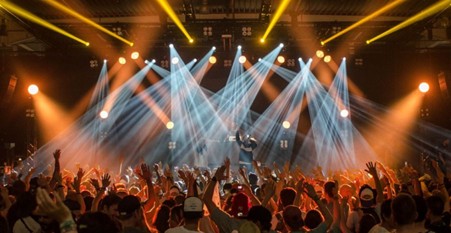The world of e-commerce is evolving rapidly, and consumer expectations are higher than ever. Shoppers now demand convenience, personalization, and immersive experiences from online retailers. One groundbreaking innovation reshaping the beauty and fashion e-commerce space is Virtual Try-On (VTO) technology.
By enabling users to see how products look on them in real time, virtual try-on is transforming the digital shopping experience—and it’s quickly becoming a must-have feature for modern brands.
What is Virtual Try-On?
Virtual Try-On is a technology that allows customers to visualize how products will look on them before making a purchase. By using augmented reality (AR) and artificial intelligence (AI), VTO tools simulate real-time interactions with products such as makeup, glasses, clothing, and accessories.
The technology works by analyzing facial or body features using a smartphone camera or webcam. It overlays digital renderings of the product onto the user’s image, offering a realistic preview. VTO can be powered through apps, mobile browsers, or desktop platforms, often integrated directly into product pages.
The Rise of VTO in E-commerce
As digital shopping becomes more mainstream, especially post-COVID-19, customers have grown accustomed to purchasing online but still crave the tactile, visual reassurance that comes with in-store shopping. Virtual try-on bridges this gap, offering a solution that replicates the in-person experience with the convenience of digital access.
Key Drivers Behind VTO Growth:
- Increased smartphone usage with high-resolution cameras.
- Advancements in computer vision and machine learning.
- Growing demand for personalization and interactivity.
- Need to reduce return rates in fashion and beauty sectors.
Benefits of Virtual Try-On for Brands and Consumers
1. Enhanced Consumer Confidence
Shoppers often hesitate to buy fashion or beauty products online due to uncertainty about fit, color, or suitability. VTO eliminates this hesitation by showing exactly how a product will appear, increasing buyer confidence and satisfaction.
2. Reduced Return Rates
Returns are a significant challenge in e-commerce, especially in apparel and cosmetics. Virtual try-on helps mitigate this issue by enabling better decision-making before purchase, which leads to fewer returns and lower logistics costs.
3. Higher Conversion Rates
Brands using VTO often report higher engagement and conversion rates. According to industry reports, products featuring VTO options often see higher conversion rates. When shoppers can see a product in action, they’re more likely to complete a purchase.
4. Personalized Shopping Experience
VTO offers a highly customized experience that adapts to individual features like skin tone, face shape, or body dimensions. This level of personalization fosters brand loyalty and increases the likelihood of repeat purchases.
5. Competitive Advantage
Early adopters of virtual try-on gain a strong competitive edge in a crowded market. Incorporating cutting-edge technology signals innovation, enhances brand image, and attracts tech-savvy consumers.
Applications of Virtual Try-On in the Beauty Industry
Beauty brands were among the first to embrace VTO technology, particularly in cosmetics. Here’s how they use it:
Makeup and Skincare:
- Foundation matching based on skin tone and lighting.
- Real-time previews of lipstick, eyeshadow, blush, and more.
- Integration with skin analysis tools to recommend personalized skincare routines.
Leading Brands Using VTO:
- L’Oréal developed its ModiFace technology, now used across all its brands.
- Sephora offers an in-app “Virtual Artist” that lets users try on makeup with facial recognition.
Virtual Try-On in Fashion E-commerce
Fashion retailers are pushing the boundaries of virtual fitting rooms to reduce sizing issues and boost buyer confidence.
Clothing & Accessories:
- Virtual fitting rooms use AI and AR to generate 3D avatars based on user body scans.
- Shoppers can view how garments drape, move, and fit from multiple angles.
- Try-on for eyewear, hats, shoes, and jewelry has also gained traction.
Notable Brands Innovating in Fashion VTO:
- Zara uses virtual models and fitting simulations to display clothes on diverse body types.
- Nike developed an in-app feature to help users find the perfect shoe size using smartphone measurements.
Challenges and Limitations
Despite the many benefits, VTO technology still faces a few hurdles:
- Device Limitations: VTO quality can vary based on camera resolution and processing power.
- Accuracy of Fit and Color: Lighting, camera angle, and screen calibration can affect how true-to-life the try-on experience feels.
- Privacy Concerns: Using facial recognition and storing biometric data can raise security and privacy questions.
- Implementation Costs: High-quality VTO integration can be expensive, especially for small to mid-sized brands.
However, these challenges are being rapidly addressed with improvements in AI algorithms, 5G connectivity, and cloud computing.
The Future of Virtual Try-On
Looking ahead, VTO is set to become even more sophisticated. Here’s what we can expect:
- Metaverse Integration: Consumers may soon try on virtual fashion for their avatars before purchasing the real item.
- Haptic Feedback: Combining VTO with touch simulations could allow users to “feel” fabric texture or product weight.
- Real-Time Body Tracking: Advanced motion capture will make trying on clothes even more realistic.
- Cross-Platform Consistency: Seamless VTO across devices and platforms, improving user experience regardless of hardware.
SEO Best Practices for Brands Using Virtual Try-On
To fully capitalize on the SEO potential of VTO, brands should:
- Use Schema Markup: Implement product schema with AR capabilities to help search engines understand and highlight features.
- Optimize Visual Content: Compress and tag AR images and videos with relevant keywords.
- Create Educational Content: Publish blogs and how-to guides about using VTO for specific products.
- Enable Mobile Optimization: Ensure VTO tools are responsive and load quickly on all devices.
- Encourage User-Generated Content: Let customers share their try-on experiences on social media with branded hashtags.
All in all, Virtual Try-On is revolutionizing the way people shop online, especially in the beauty and fashion industries. By offering realistic, personalized, and engaging experiences, VTO helps brands enhance customer satisfaction, reduce returns, and increase conversions.
As technology continues to advance, integrating virtual try-on into your e-commerce strategy is no longer optional—it’s essential for staying competitive and meeting evolving consumer expectations. The future of beauty and fashion retail is virtual, and it’s already here.
References:
1]https://www.getfocal.co/post/virtual-try-on-in-e-commerce-a-research-summary
2]https://www.lorealparisusa.com/virtual-try-on-makeup
3]https://modiface.com/
4]https://www.youtube.com/watch?v=NFApcSocFDM
5]https://futurestores.wbresearch.com/blog/zara-augmented-reality-app-virtual-model-strategy
6]https://etailwest.wbresearch.com/blog/nike-wants-to-use-augmented-reality-to-measure-your-shoe-size
7]https://www.thinkwithgoogle.com/consumer-insights/consumer-trends/trending-visual-stories/story/augmented-reality-shopping-data/
8]https://www.forbes.com/sites/zengernews/2024/07/11/virtual-try-ons-will-change-fashion-jobs-forever/
9]https://onix-systems.com/blog/virtual-try-on-for-ecommerce-use-cases
10] https://www.netguru.com/blog/virtual-try-ons-sales





